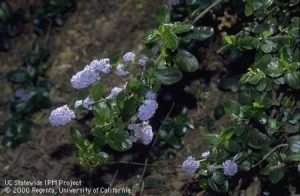In early Spring your eye is drawn to the purple blossoms on a plant that appears to be in the wrong place. Wide open fields or large empty lots are often the home to a single flowering fragrant lilac, standing like a monument from the past. During your grandmother’s or your mother’s time, many homes had a lilac planted at an entryway to the home. When the lilac would bloom, the home would fill with that sweet fragrance. As an example of the longevity of the species, the lilac would often outlive the house, leaving the plant to look out of place in the countryside.
Walt Whitman wrote a poem about lilacs. One stanza especially describes their beauty:
When Lilacs Last in the Dooryard Bloom’d:
In the dooryard fronting an old farm-house near the white-wash’d palings,
Stands the lilac-bush tall-growing with heart-shaped leaves of rich green,
With many a pointed blossom rising delicate, with the perfume strong I love,
With every leaf a miracle—and from this bush in the dooryard,
With delicate-color’d blossoms and heart-shaped leaves of rich green,
A sprig with its flower I break.
Syringa vulgaris, or the common lilac, plays a long and important part in history. Our oldest living American lilacs are in New Hampshire at the Governor Wentworth estate, planted in 1750. Thomas Jefferson wrote about his methods for transplanting lilacs in 1767. George Washington must have read Jefferson’s paper since in 1785 he also transplanted lilacs on his estate. Lilacs are a part of history for many of us, transporting us to a time of family gatherings that included bouquets of color and fragrance.
For best results with lilacs, planting them in full sun and well-drained soil is the key. Soil pH (alkalinity or acidity of the soil) has an effect on the growth of lilacs. Lilacs prefer alkaline or very slightly acidic soil. Very acidic soil will require the use of a soil amendment. Also, lilacs will tend not to bloom until established so use your starter fertilizer to increase root growth and development.
Abundant flowers every year require cutting off the spent blooms, back to a set of leaves. By preventing the flowers from maturing into seedpods, you will have consistent annual blooms instead of one year with great production and the following year with poor flower production. Flower buds are developed over the summer so any winter pruning will remove spring flowers.
There are over 400 different cultivars of lilacs with a possibility of 800 to 900 different clones. Lilacs come in many sizes and colors. They originated from Europe and Asia. Flowers are either single or doubles in petal formation.
If you are looking for an intense fragrance without the large size, a “Miss Kim” could fill the bill. Originally from Korea, “Miss Kim” has a compact form that is very upright and rounded. This lilac is said to be more fragrant than roses! Another benefit of “Miss Kim” is a strong resistance to powdery mildew, which is a problem with many lilacs. “Miss Kim” could easily fit into your garden as a border plant or a specimen planting.
Lilacs are dramatic in many ways. Between intense fragrance, heart shaped leaves, and a wide variety of colors, they are an enhancement to any home or garden.
Julie Silva is a University of California Cooperative Extension Master Gardener of Tuolumne County.


